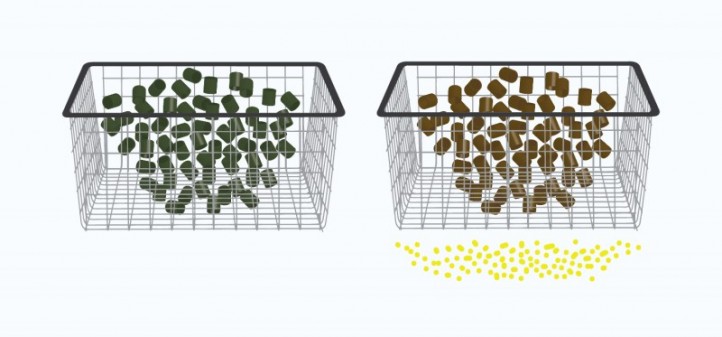blog 

MIM Series Part 5: Debinding

Debinding is our fifth part of the MIM101 blog series. This post will help you understand why debinding is a critical step in the MIM process. If you remember, in my last post about molding, after the part comes out of the machine it is considered “green” and is about 20% larger than the final part. In order to go into the sintering phase without defects, the part needs to be debinded. After the debinding process is complete, the part is considered “brown”.
For more information on our MIM process or to get in touch with our team of engineers, contact us today.
The debinding process removes the primary binding material from the molded component. Typically, there are steps to the debinding process, and the part goes through more than one cycle to ensure as much of the binding material is removed as possible before sintering. After the debinding step the part is semi-pourous, which allows the secondary binder to easily escape during sintering cycle. Many question why debinding is needed, but without this critical step the part would not be as sturdy. Debinding also prevents furnaces from clogging which can lead to added expenses on the manufacturing side. It also is a faster process to debind and then sinter, versus just sintering alone. Debinding can be done using multiple methods. The three most common methods are explained in detail below.
Debinding Methods
There are three types of debinding methods that are typically used – thermal, supercritical fluids (SFC), and solvent. Thermal debinding is a method within a temperature-controlled environment. It has inexpensive equipment but has a long processing cycle and results in poor “brown” strength. Supercritical fluids debinding is a method that occurs in a gaseous acid environment. This method has good “brown part” strength and is environmentally friendly, but has a patented process with few suppliers and limited materials. The last method is the one most commonly used throughout MIM manufacturers – solvent debinding. Solvent debinding is a process where acetone, heptane, trichloroethylene, and water are used. It results in good “brown part” strength and is a consistent process that utilizes a closed loop system. Solvent debinding is not as environmentally friendly as the other methods, which is one of the only downsides in using this type of debinding.
In the final part of this series, you’ll learn about the sintering phase. This phase is the final one in the MIM process, and creates the finished part.
Do you have any additional questions about the debinding process? We'd be happy to help! Contact our team of engineers today.
You may also be interested in:



